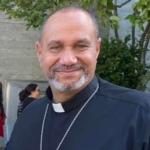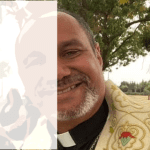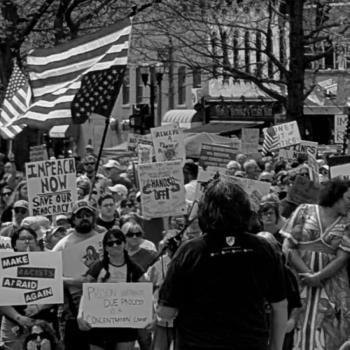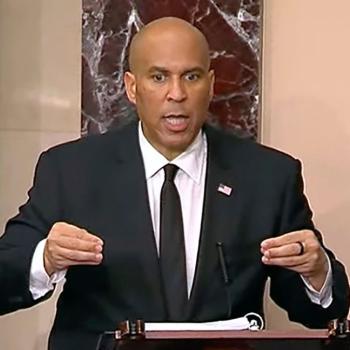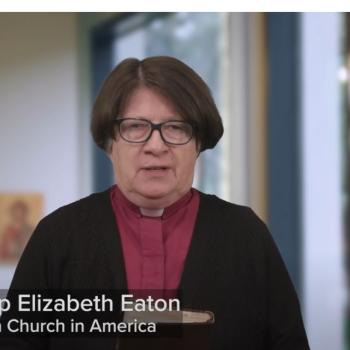This is the third in a series on the saga of Rev. Nelson Rabell-González, fired as pastor and mission developer of Misión Latina Luterana in Stockton, Ca., on Dec. 12, 2021. Read part one here, and part two here. This article is about the day the ELCA’s Sierra Pacific Synod and Bishop Megan Rohrer “disappeared” Pastor Nelson.
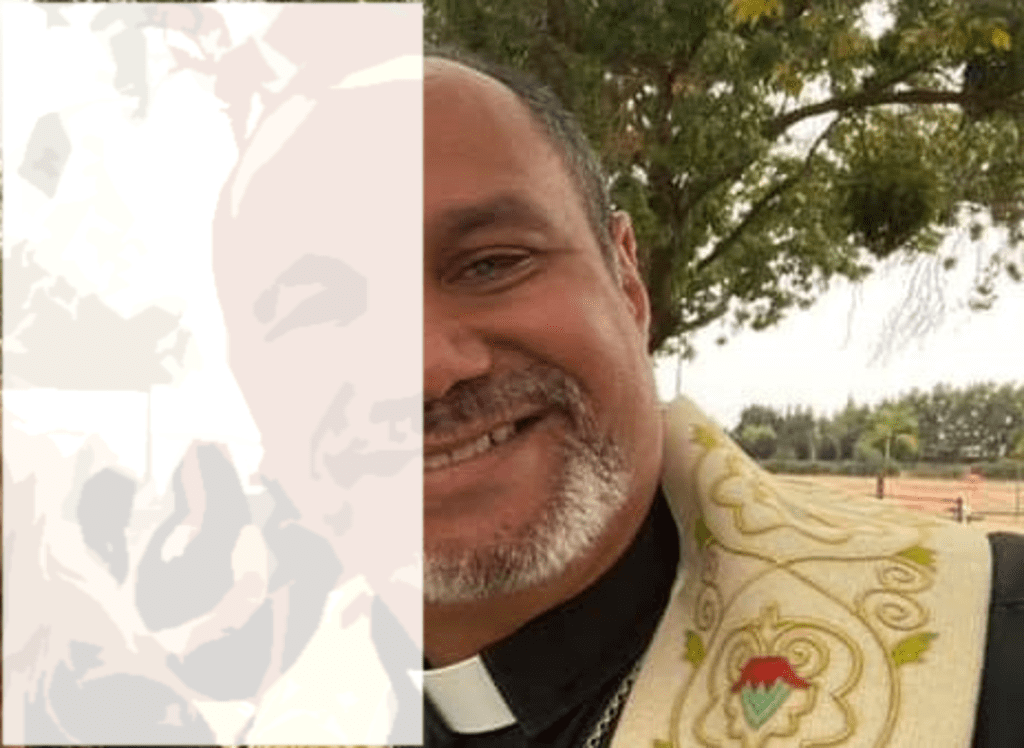
(How is a white, female, Lutheran clergyperson living in Kentucky able to tell this story? Pastor Nelson Rabell-González is my colleague and friend, and he invited me to a Zoom meeting with some members of the congregation. They shared their recollections of the events of that day, sent me a link to the video of the service, and gave permission for me to tell this story on their behalf. I am humbled by their trust and am grateful for what they have taught me.)
Día de la Virgen de la Guadalupe at Misión Latina Luterana
Festive music dances out from the sanctuary as the Mariachi band serenades parishioners gathering for worship. It is Día de la Virgen de la Guadalupe, the feast day of Our Lady of Guadalupe, and the congregation of Misión Latina Luterana has come together to celebrate one of the most sacred days of their culture. A statue of the Virgin Mary stands amidst an arrangement of roses, poinsettias, and other flowers. After filing into the pews, everyone turns to watch the procession of noble Aztec dancers. They are arrayed in colorful feather headdresses, beaded cloaks, and seed leggings called chachayotls that chaka-chaka-chaka in time with their footsteps.
The congregation knows that this is more than a dance. The dance is a prayer. And it is a long prayer. As the incense wafts around them, the congregation is prepared to move in time with the dance and the drums and the prayer for perhaps ten minutes or more.
But suddenly, the dancers process out. What’s going on? Why was the prayer cut short?
And where is Pastor Nelson?
Normally the congregation would have seen him greeting them warmly as they entered, giving last-minute instructions to the worship assistants, laughing with children, and making sure all was in place for this sacred worship service.
But Pastor Nelson is nowhere to be found. Instead, the service is led by the assistant to Bishop Megan Rohrer who sits in the chancel area looking on.
In this video at minute mark 32:50 you can hear a man call out: “Where is Pastor Nelson?” They are told they must wait until the end of the service to find out.
Amidst shouts of injustice against their pastor and against their community, the congregation rises up in anger that their pastor is missing without any explanation.
“If he’s not here, we’re not going to be here!” someone yells. “Vámonos!” others call out.
Refusing to be treated as children who are told to shush and wait, the members pick up the statue of Mary, gather up the flowers and the cross, and leave the sanctuary. Suddenly, a child runs up to the Bishop and hands them a rose (Bishop Rohrer’s pronouns are they/them). The video shows the Bishop holding the rose while watching the congregation leave.
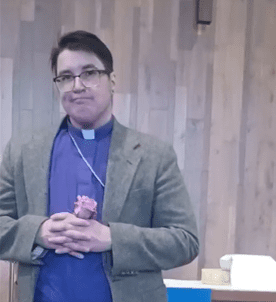
Where the congregation will go, they do not yet know. But they will not stay and be treated like second-class citizens on this day. Not on this day, Día de la Virgen de la Guadalupe, the feast day of Our Lady of Guadalupe.
Why is this day significant? And why would a Lutheran congregation be celebrating a Catholic feast day?
Understanding the history and cultural significance of Our Lady of Guadalupe will shed some light on why the ELCA, the Sierra Pacific Synod, and Bishop Megan Rohrer have done so much damage to the Hispanic community.
The Tradition of Juan Diego and the Virgin Mary
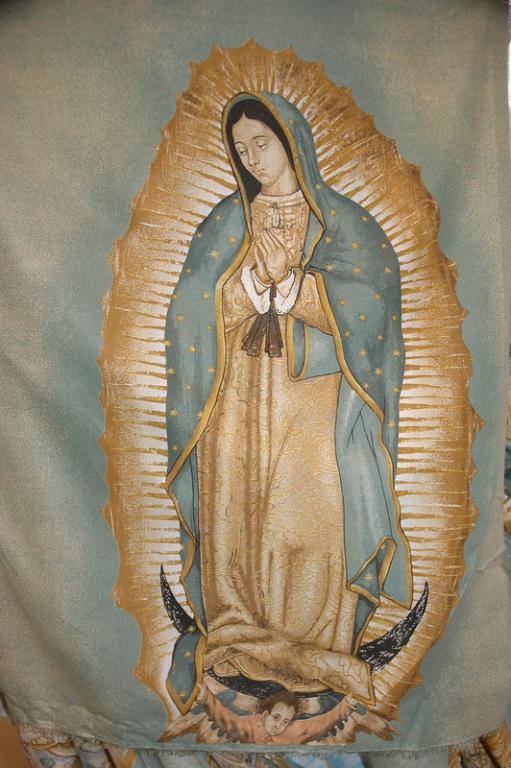
According to historic accounts, in December 1531, Juan Diego, an indigenous Mexican peasant, beheld the Virgin Mary at a place called Tepeyac Hill near Mexico City, Mexico. She spoke to him in his native language, Nahuatl. This was the language of the Aztec empire, defeated by the Spanish conquistadores a decade earlier.
Pause here. Take this in. The Mother of Jesus spoke to the impoverished native of a defeated people in his own language. Remember this detail. It will be important later.
In a series of visions, Mary asked Juan Diego that a church be built to honor her on that site. He reported his vision to the Archbishop and was initially dismissed. But after continued appearances, the Archbishop instructed Juan Diego to ask her for a sign to verify her identity.
Pause again. Take note. Mary did not appear to a priest or bishop. Mary chose to appear to a common person outside of the religious hierarchy.
On his way to visit his dying uncle, Juan Diego encountered the Virgin once again. She asked him, “¿No estoy yo aquí, que soy tu madre?” (“Am I not here, I who am your mother?”). She told Juan Diego that his uncle was healed and that he should gather flowers from Tepeyac Hill. On that cold peak in the dead of winter, he found Castilian roses miraculously in bloom.
Pause one more time. Don’t miss the significance of the rose, the flower associated with Mary. (Remember the hymn, “Lo, How a Rose”?) And note the impossibility of beauty in a desolate place.
Juan gathered the flowers into his cloak and brought them to the Archbishop. The flowers cascaded to the floor leaving the image of the Virgin of Guadalupe on the fabric of the cloak. Convinced that this peasant had indeed encountered the Mother of Jesus, the Archbishop had the cloak installed in a hastily-built chapel on Tepeyac Hill. Over the centuries, this shrine has grown to become one of the most-visited Catholic sites, in fact, one of the most popular of all religious sites, in the world.
Why is Día de la Virgen de la Guadalupe so special for Indigenous, Mexican, and other Latinx peoples?
Día de la Virgen de la Guadalupe is a festival of hope in the face of impossibility. It is a celebration of identity and liberation. This story conveys to a colonized and oppressed people that they have not been forgotten. That they are worthy of divine attention. It tells migrants who are making their way across a desolate and dangerous wilderness in desperate search of safety and sustenance that roses can bloom in the desert. That Mary, su madre, the patron saint of all the Americas, watches over them and cares about them.
Día de la Virgen de la Guadalupe also validates the memory of a disappeared Indigenous people. Tepeyac Hill was the site where the ancient Aztecs had worshiped their earth goddess, Tonantzin. To see Mary appear on that holy site with words of both comfort and instruction communicates to Native peoples that they are seen, they are remembered, and they have agency in their own future. This is why Cesar Chavez used the symbol of the Virgin of Guadalupe in his fight for migrant rights. Mary’s Magnificat (Luke 1:46-55) and her image are a symbol of justice.
La Virgen de la Guadalupe transcends cultures and denominations.
For Hispanic Lutherans, there is a parity between Martin Luther and Juan Diego. Luther was a lowly monk who persisted in his struggle against a religious power structure that sought to dismiss him and the common people. So, too, Juan Diego, a lowly indigenous peasant, also persisted against religious authority that sought to dismiss him and his colonized people.
This is why, on December 12, 2021, at Misión Latina Luterana in Stockton, California, the congregation had invited both a Mexican Mariachi band and Aztec dancers to join their worship service honoring Día de la Virgen de la Guadalupe. The band, the dancers, the flowers, the statue of the Virgin, the service in the native language of a people whose country seeks to exploit and suppress them – all of these cultural and religious elements combine in a glorious mash-up of holy celebration. Flowers in a desolate place. Hope in the face of oppression.
And this is why it was so utterly disrespectful and offensive that the religious authorities of the Lutheran church took over the service, cut short the prayers of the Aztec dancers, and disappeared their pastor.
Bishop Rohrer did not come to Misión Latina Luterana to worship with respect and honor, but to impose an edict upon the people. Why? That’s a good question. As of this writing, no statement has been released by Bishop Rohrer, the Sierra Pacific Synod Council, or the ELCA with an explanation.
Disappearing a Pastor
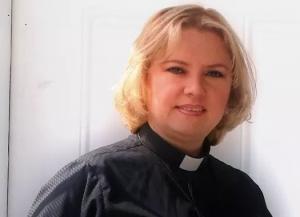
While the stories are not related, the disappearing of Pastor Nelson shares similar themes with the kidnapping of Rev. Betty Rendón by Trump’s ICE. (Read about that story here.) In both cases, a white power structure accused a Latinx pastor of “breaking the law” and had them removed from their communities without discussion or deliberation.
Pastor Betty was removed by the state because she broke an unjust law that demanded she be sent back to a violent and dangerous situation in her home country. It was a law that left her no options even after multiple appeals for mercy.
Pastor Nelson was removed by the church because he broke an unjust “law” that insisted he receive “therapy” in response to a baseless charge, one that was part of a strategy to destroy his career and reputation. (I’ll explain more about that strategy in the next article.) He was left with no options even after multiple appeals for due process, transparency, and mercy.
“Of all days, please not this day,” Pastor Nelson pleaded with Bishop Rohrer when they met the morning of Dec. 12th, just hours before the service was to begin. According to a piece written by one of the bishop’s assistants, she, too, repeatedly asked that they wait until after this sacred day. But the bishop refused to listen.
The “law” of white supremacy and white hegemonic systems is a double bind that sets up a no-win situation for members of oppressed communities.
History has shown that the tactic of disappearing a faith leader is meant to cause terror in the hearts of the community. If an upstanding member of the clergy can be disappeared, what does that mean for their congregation? If the powers can take away the leader, the community is all the more threatened. At the very least, they are severely hindered in their efforts to the be church.
The disappearing of Pastor Nelson also triggers painful memories for many in the Latinx community who have seen parents, children, aunts, uncles, cousins, friends, or coworkers whisked away without explanation. Just like them, their pastor was disappeared without warning or explanation.
And for what? Speaking from my perspective as an ordained minister in the ELCA, typically a pastor is abruptly removed only if they have committed a crime, assault, abuse, or sexual impropriety. But Pastor Nelson has done nothing of the sort. How do we know that? In my next article I will explain. For now, just know that he has repeatedly asked for a full investigation of the accusations against him. A guilty person would not request such an investigation.
The fact that neither former Bishop Holmerud, nor Bishop Rohrer, nor Presiding Bishop Elizabeth Eaton have agreed to this investigation raises concerns that there is something being hidden.
In the meantime, Bishop’s Rohrer’s actions have brought denunciations from several organizations within the ELCA that represent communities of color, including Asociación de Ministerios Latinos de la ELCA and African Descent Lutheran Association. Even more remarkable, Extraordinary Lutheran Ministries, an organization that affirms and supports LGBTQIA+ Lutheran rostered leaders, announced its decision on Dec. 20th to “suspend the membership of Bishop Meghan Rohrer [the first trans bishop elected in the ELCA] in the ELM Proclaim community and events. This is a response to an existing pattern of behavior from Bishop Rohrer that misaligns with ELM’s Mission, Vision, and Values.” (Read the full statement here.)
In their statement, ELM explained, “The Accountability Team has attempted to work with Bishop Rohrer to specifically address how the bishop’s racist words and actions have harmed members of the ELM staff, board, and community. In September, Bishop Rohrer declined the Accountability Team’s invitation for continued work to repair these relationships.” This suspension means that ELM will not include Bishop Rohrer’s name on any of their communications or invite them to events sponsored by ELM.
This is a bold and necessary action on the part of ELM.
This action models what accountability should look like for the ELCA as well.
If the churchwide office of the ELCA truly wants to uphold its commitment to anti-racism and to its own governing documents, it will investigate the actions of Bishop Rohrer that clearly demonstrate “conduct incompatible with the character of the ministerial office” (ELCA Constitution, Bylaws, and Continuing Resolutions, 20.22.01).
Meanwhile, this conduct has resulted in unimaginable distress and pain for Pastor Nelson and his family.
But here’s the thing. This is not just about the unjust treatment of Pastor Nelson.
This is about the systematic disruption and destruction of a Latinx congregation that has been conducting vital and life-saving ministry in the community.
Life-saving ministry? How so?
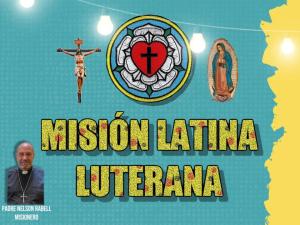
There was something else happening on Dec. 12th at Misión Latina Luterana. The congregation was hosting a Covid-19 vaccination clinic for the community that was anticipated to reach upwards of 100 people. But because of the actions of Bishop Rohrer and the Synod that disrupted the work of the congregation that day, a mere 25 people received vaccines. In the middle of the Omicron surge.
Certainly, this is not the first time the people of Misión Latina Luteran have faced the heavy hand of white supremacy dismissing and disrespecting them. But the fact that this came from the denomination and synod that had pledged to support and uplift them is a betrayal that cuts deep. Perhaps too deep for repair.
Mary’s Magnificat will not be silenced.
A colleague and I were lamenting that this attack on the community feels so wrong on so many levels. It’s liturgically, culturally, racially, and morally wrong. And the unfortunate (or deliberate) timing means that Pastor Nelson, the congregation, and their allies must take on a battle against systemic racism right in the middle of Advent. But then she said something that shifted my perspective.
“Maybe taking down empire is the work of Advent so that we can bear Christ forth into the world.”
And wasn’t that Mary’s work?
As her full-throated Magnificat soars through millennia and across Tepeyac Hill, it finds its voice in the congregation of Misión Latina Luterana. We can imagine the congregation singing and praying with Mary that God will scatter the proud in the thoughts of their hearts. That God will bring down the powerful and lift up the lowly. And that God will remember God’s servants with mercy (Luke 1:52-54).
May the defiant and hope-filled song of la Virgen de la Guadalupe sustain Pastor Nelson and the congregation of Misión Latina Luterana. And may God’s justice sing with joyous Mariachi music, dance with the chaka-chaka-chaka of the Aztec chachayotls, and flower like roses in a desolate place.
UPDATE: Bishop Rohrer and the Sierra Pacific Synod Council have removed Rev. Nelson from the ELCA roster of ministry as of Feb. 7. Read the story here.
How can you help?
If you would like to stand with Rev. Nelson Rabell-González, we invite you to contribute to his Legal Defense / Life Expense Fund.
Click here: https://fundly.com/nelsonsbills
The organizers who are supporting Pastor Nelson have asked that people contact the ELCA Churchwide Office (1-800-638-3522; [email protected]) to ask for three things:
- Reinstate Rev. Nelson Rabell-González as pastor and mission developer of Misión Latina Luterana.
- Issue a public apology to the congregation and the Hispanic community at large as well as to Rev. Nelson Rabell-González.
- Conduct a full, independent investigation of the charges against Rev. Nelson Rabell-González as well as the actions of the Sierra Pacific Synod.
Read also:
Part One: The Removal of Rev. Rabell-González: A Case Study in ELCA Corruption and Racism
Part Two: ELCA Fires Whistleblower, Rev. Nelson Rabell-González
Part Four: The NDA, the Church, and the Attempt to Silence Rev. Nelson Rabell-González
Part Five: Why the ELCA Needs to Investigate the Case of Rev. Nelson Rabell-González
Part Six: Pastor Nelson’s Wife Speaks: The Year of Pain
Trump’s ICE Targets Lutheran Minister, Betty Rendón
Pastor Betty Rendón is Slated for Deportation – Why This is Crossing a Line
When God Breaks the Law: Immigration, Asylum & Pastor Betty Rendón
For a complete compilation of all documents, blogs, commentaries, and posts from all parties about the situation in the Sierra Pacific Synod, visit this website created by Shruti Kulkarni: https://whathappenedinthesps.weebly.com/. This website compiles communications relating to the controversy for accountability, clarification, and ease of access.

The Rev. Dr. Leah D. Schade is ordained in the ELCA. She does not speak for the ELCA; her opinions are her own. She is the author of Preaching in the Purple Zone: Ministry in the Red-Blue Divide (Rowman & Littlefield, 2019) and Creation-Crisis Preaching: Ecology, Theology, and the Pulpit (Chalice Press, 2015). She is the co-editor of Rooted and Rising: Voices of Courage in a Time of Climate Crisis (Rowman & Littlefield, 2019). Her latest book, co-written with Jerry Sumney is Apocalypse When?: A Guide to Interpreting and Preaching Apocalyptic Texts (Wipf & Stock, 2020).
Twitter: @LeahSchade
Facebook: https://www.facebook.com/LeahDSchade/


